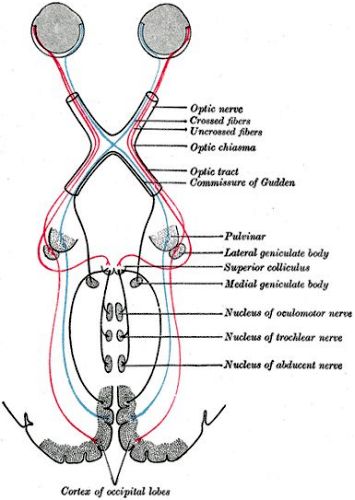Feedback archive → Feedback 2013
Eye wiring clarified
A supporter asks about an apparently strong argument from design from a well-known Christian speaker. Drs Don Batten and Jonathan Sarfati show that this argument is fallacious, but only because it overlooks another amazing design feature.
Geoff W., from Australia, writes,

Hi. Thanks for your website. Superb!
I have a question about the human optic nerve. In a videoed talk by Louis Giglio, he said that when we are being formed in the womb, our million optic nerve fibres in the eye have to connect correctly to corresponding nerve fibres coming from the brain. Do you agree?
If this is true, then the chances of this occurring correctly would be one in ‘one million factorial’. I tried to calculate this value on a calculator, but it gave infinity as an answer. The best I could do to get a numerical result was 200 000! (factorial; on an online calculator). The result was already an extremely enormous number. Is this improbability another nail in the evolutionist coffin (assuming there is still room left for another nail)?
Thanks.
Dear Geoff,
Thanks for your encouragement re the website and for writing to CMI to check such claims.
Sadly, this argument is fallacious. Some time back, we had to reject a paper for the Journal of Creation that expanded on this idea: how amazing it was that the brain and eye’s nerve wiring enabled sight. This argument was likewise based on calculating the probability of each neuron from the eye mapping to an exact location in the brain. But this is not how it works, because the brain learns how to make meaningful images from the nerve connections provided, which are not pre-determined at all (beyond the fact that connections are made!). So the brain has an amazing ability to map itself to make vision work (which is even more incredible). Our article Walking trees … Modern science helps us understand a puzzling miracle, on Jesus’ healing the blind man at Bethsaida, relates to this matter of the need for the brain to learn to see (it is not ‘hard-wired’). There is now a lot of research that supports this concept. An article from 20091 presents evidence from the study of a girl born with only a left brain hemisphere (no right hemisphere) who could see normally, which should not be possible with ‘hard wiring’:
University of Glasgow researchers used Functional Magnetic Resonance Imaging (fMRI) to reveal how the girl’s brain had rewired itself in order to process information from the right and left visual fields in spite of her not having a whole brain. The right hemisphere in the girl’s brain failed to develop in the womb.
Normally, half the nerves of each eye go to each side of the brain, so that each eye is mapped to both the left hemisphere and the right hemisphere (see wiring diagram), but scans on the German girl showed that retinal nerve fibres that should go to the right hemisphere of the brain diverted to the left.
Further, the researchers found that within the visual cortex of the left hemisphere, which creates an internal map of the right field of vision, ‘islands’ had been formed within it to specifically deal with, and map out, the left visual field in the absence of the right hemisphere.
Dr Lars Muckli of the Centre for Cognitive Neuroimaging in the Department of Psychology, who led the study, said:

This study has revealed the surprising flexibility of the brain when it comes to self-organising mechanisms for forming visual maps.
The brain has amazing plasticity but we were quite astonished to see just how well the single hemisphere of the brain in this girl has adapted to compensate for the missing half.
Despite lacking one hemisphere, the girl has normal psychological function and is perfectly capable of living a normal and fulfilling life. She is witty, charming and intelligent.
The girl attends regular school and takes part in activities such as roller-skating.
The same principles apply to cochlear ear implants; the recipients of these devices learn to interpret the signals and the perceived sound becomes clearer over time as the brain learns the best interpretation. This can commonly take up to two years and some people report ongoing improvement beyond that timeframe.2
A May 2013 study by American and Australian scientists published in Proceedings of the Academy of Science (PNAS) showed just how flexible the brain can be in re-mapping itself following damage. This even includes co-opting parts of the brain far removed from the damage, in areas not previously considered as possible because of wrong perceptions of brain specialization.3 This phenomenon is called cortical plasticity.
Our brains are indeed an incredible example of sophisticated design, albeit not in the way some claim. The related articles provide more information on this. So the brain is still immensely powerful testimony of One who is far superior to humans as an inventor/creator.
Don Batten and Jonathan Sarfati
References
- Scientists reveal secret of girl with ‘all seeing eye’, July 20, 2009; http://phys.org/news167324813.html. Return to text.
- Cochlear implants; http://funnyoldlife.wordpress.com/cochlear-implants/. Return to text.
- Evidence that brains re-wire themselves following damage or injury, Garvin Institute media release, 14 May 2013; http://www.garvan.org.au/news-events/news/evidence-that-brains-re-wire-themselves-following-damage-or-injury.html. Return to text.


Readers’ comments
Comments are automatically closed 14 days after publication.